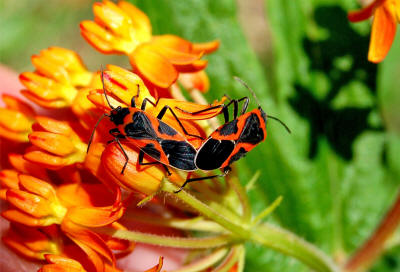|

by
Georgi Gladyshev
October 17, 2009
from
Knol Website
|
Life arises and
develops in gravitationally bound atomic systems, under
certain conditions, in the presence of the inflow of
energy.
A condition of
structural dynamic reactivity to the energy inflow
qualifies what are anthropomorphically considered as
'alive objects'.
Alive objects, in this perspective, can be quantified
further as thermodynamic quasi-closed supramolecular
systems, which are a part of natural open systems.
These systems appear and evolve in periodic conditions
near to internal
equilibrium.
This systems
attribute of dynamic life can be understood further by
the determination and use of mathematical 'state
functions', which are functions that quantify the state
of a system defined by the ensemble of physical
quantities: temperature, pressure, composition, etc.,
which characterize the system, but neither by its
surroundings nor by its history.
In this view, the phenomenon of a life is easily
understood as a general consequence of the laws of the
universe, in part... |
“For all its familiarity,
life is an elusive concept that is hard to define, much
less explain.”
Robert M. Hazen
Introduction
The term 'life' is modern conception, an etymological adaption of
the Old English libban 'to live' from before the 12th
century.
Into the late 18th century,
with the advances in the sciences of chemistry and biology, life
came to be divided generally into three mutually exclusive
categories:
-
non-life
-
plant-life
-
animal-life
With the 1859 publication of
On The Origin of Species,
by English naturalist
Charles Darwin, a more unified
view soon emerged [11].
In particular, in an 1871 letter written
by Darwin to English botanist Joseph Hooker, Darwin made the
suggestion that the original spark of life may have begun in a:
“warm little pond, with all sorts of
ammonia and phosphoric salts, lights, heat, electricity, etc.
present, so that a protein compound was chemically formed ready
to undergo still more complex changes."
This passage set forth a great divide,
in the minds of the scientific community, that life is a result of
the interaction of heat with chemical systems and that a certain
description of this 'heat interaction' with systems of atoms can be
found so as to exactly quantify the term life [12-15].
Although this assumed description is yet
to be agreed upon, the concept of 'biological life' or simply 'life'
is central in all divisions of the biological and related sciences
[9].
Terminological examples include:
-
life
-
lifetime
-
healthy life
-
lifespan
-
lifestyle, etc.,
...the use of which can be found
predominately in the science of gerontology, the comprehensive study
of aging and the problems of the aged.
The term 'life', however, is
sufficiently ambiguous, since there does not exist a strict
universal determination of this concept [9, 10-15].
The definition of the mentioned term, from the position of the
general laws of nature [1-4] and in view of the motive
power of heat in the development of biological material, would allow
from this united position, a more in depth study of the great
diversity of biological systems and phenomena.
This work is dedicated to the attempt to
formulate an idea about life as bio-physico-chemical phenomenon,
taking into account the results the thermodynamic theory of
evolution and aging of living systems, whose bases were placed
by the author, beginning in the late 1970's. [2-5].
Variety of the
life
There are many different determinations of the phenomenon of
biological life as one of the forms of existence of material.
The number of these determinations uses
the data about the chemical composition of living objects, the
exchange of substances of living material, storage and transmission
of genetic information and different signs, which characterize the
phenomenon of life [9-11].
There are sufficiently many such 'signs'.
One will sometimes note that none of the
existing determinations of life are universal. It is possible,
however, to give the determination of life on the basis of the
general laws of nature, relying on contemporary achievements in the
region of exact science:
If one takes into account, that life, as
an inherent component of the heat-driven evolution of material, then
it is expedient to determine the phenomenon of life from the
position of what is called the 'motive power' of the evolution of
material systems.
The term motive power, from French
physicist Sadi Carnot's 1824
On the Motive Power of Fire,
represents the mechanical effect of heat or the useful movement
driven by such interaction [12].
This motive power, in the systems-within-systems point of view,
seems to act as a 'double force'. The motive power determines the
overall directivity of processes in the system, such as in the total
evolution the biosphere, movements induced due to the inflow of
energy into the system from without, and the action of individual
multi-directional spontaneous processes, which take place strictly
in locations (or subsystems) of the greater system itself [2,
6-8].
The processes indicated are observed at
the nano-level (atomic level) and the highest hierarchical levels
(social levels) of the organization of living material.
Thus, taking into those laws of science, which determine the laws of
nature, in particular the
laws of thermodynamics, life can be
characterized as a manifestation of one of the forms of existence of
material, inherent with the rotation of the substance, which takes
place under the action of energy flow, predominately solar energy.

The motive force of
the non-spontaneous processes of
the cycle of
matter, first of all, is connected with the Sun.
In the early stages of this dynamic life manifestation, smaller
atomic structures and systems interaction, under the action external
energy input, in such a manner that the synthesis of larger
structure results, from higher stable chemical components.
An example this process being
photosynthesis, in which the larger structure glucose C6H12O6
is synthesized from the more energetically stable components of
carbon dioxide CO2 and water H2O.
However, it should be remembered that in
addition to solar power, there are other sources of energy.

Black smokers
In this view, life is a phenomenon
caused by the synthesis of comparatively low-stability chemical
substances.
It is characterized by the appearance,
under the effect of the physical factors, such as pressure,
temperature, and volume, etc., and by the action of thermodynamic
forces, particularly enthalpy (reaction heat) and entropy
(dissipation heat), of poly-hierarchical structures, which consist
of diverse natural organic and inorganic compounds, such as water.
This view substantiates, in contrast to the older
Prigoginean view of life as a
far-from-equilibrium dissipative structure, that real living
structures appear and function, in essence, under periodic
close-to-equilibrium conditions, a state which exists inside most
living objects.
Moreover, life is possible only in the specific
ranges of temperatures, pressures and other thermodynamic
environmental parameters.
Life, subsequently, appears and is
developed in the close-to-equilibrium range and can be viewed as
dynamic molecular structures, considered as quasi-closed systems in
the thermodynamic sense, which form part of natural open systems
[2-6].
In addition, in specific ranges of changes in the thermodynamic and
physical environmental parameters, and also under the effect of
various mechanical factors, notable gravitational effects, e.g.
Coriolis “force”,
the formation of
chiral molecular and
supramolecular formations actuates.
One should emphasize that organisms,
populations and other higher structures are also complex
supramolecular formations; the 'human molecule' (human being), and
its social collectives, for instance, are the molecular subjects of
study in the science of human chemistry [12-14].
Environmental conditions force the
exchange of substances for all hierarchical levels of living
material, which contributes to appearance and retention of the
living beings. In the compressed general formulation, life can be
defined as the phenomenon of existence of the energy-dependent
dynamic hierarchic structures, mandated by thermodynamics.
Life or its phenomenon is thus claimed by kinetic hierarchical
thermodynamics, which assumes that the functions of state of
evolving systems being investigated make real physical sense.
In other words, from the position of
thermodynamics, most living systems exist in their close to
equilibrium range of evolutionary development and their conversion
in time can be characterized with the aid of the appropriate
functions of state of the formation of these systems.
It is for these purposes convenient to
use the specific
Gibbs free energy function, which
is the thermodynamic potential unique to closed isothermal-isobaric
systems, in the determination of the formation of living
near-equilibrium systems.
In this logic, living systems, using a comparative methodology from
chemistry, can be viewed as types of growing or fanning, beginning
at the nano-level, poly-hierarchical 'chromatographic columns', in
the sense that components that enter and evolve in a system, moving
through hierarchies, migrate along paths of minimum free energy
towards the most stable bonding or reaction sites.
An example of the 'chromatographic column' model is a social
hierarchy in which the 'locality' of the population, where the
selection of the most stable organism structures is observed. This
selection is initiated by physical factors by means of interaction
of the supramolecular receptors of organism, which receive the
inflows of substance and energy on the nano and macrolevels.
As is well known, similar living columns
are the quasi-equilibrium quasi-closed systems. The laboratory
(inanimate) columns, widely utilized in the molecular equilibrium
(quasi-equilibrium) chromatography, are similar systems. Thus, the
inflow of energy from without, and also the thermodynamics of the
processes of the formation of close to the equilibrium hierarchical
systems, determines appearance and maintenance of life.
Chromatographic life, similar to our
life, can appear only under specific conditions on the celestial
bodies.
However, the separate molecular and
supramolecular components of living systems can appear and exist in
diverse conditions, such as, for example, under the space
conditions.
Functions of state and directivity of processes, according to the
general laws of nature, which control the processes of development
and self-reproduction of living systems, significantly simplifies
because of the known ideas about the functions of state.


Insects mating
Functions of state have the total
differentials and unambiguously are characterized systems at the
assigned points of space with the constancy of the known physical
and thermodynamic parameters.
The use of functions of state opens the
way of realizing the unity of evolutionary development and
conversion of material on a strict physical basis [2-14].
With the inflow of energy into the system a change of the functions
of state characterizes the transformation of this system as a result
of the processes. Functions of state also make it possible to
establish the direction of spontaneous processes and to determine
the degree of their perfection inside strictly the system itself.
Changes in the specific functions of
state in the characterization of the formations of systems,
characterizes changes in the thermodynamic stability of these
systems. Thus, change in the time of the specific value of the Gibbs
function of the formation of a living system, as a result of a
variation in its chemical composition, is connected with the
thermodynamic mechanism of a change in the structural stability of
this system.
The mentioned stability approach to the process of directional
maximum sublimity, which corresponds to the minimum value of the
Gibbs function of the formation of the mentioned supramolecular
system.
With the reaching of this maximum value
of stability the process of the vital activity of the matching
system completes, and the mentioned system degrades with the
formation of other chemical substances comparatively stable, under
the environmental conditions, substances newly included in rotation.
The thermodynamic description of the rotation of substance for the
thermodynamic description of the processes of the appearance of life
and its evolution, as has already been indicated, is convenient to
use the
Gibbs function (free energy of
Gibbs) the formation of the system, whose specific value in the
ontogenesis and the phylogenies (evolution) to approach the minimum.
Aging organisms and evolution of living
systems flow in accordance with the law of temporary hierarchies and
the principle of the stability of substance.
The thermodynamic mechanisms, i.e.
mechanisms of a change of the functions of state of systems in time,
of evolutionary transformations in the living systems, and in the
rotation of substance as a whole, are examined in the numerous
publications of the author [2-8].
Diagrams of the rotation of substance, from the position of
hierarchical thermodynamics [2, 10], are represented
various publications.
The condition for existences of life
must correspond to temperatures, pressures and other physical
chemistry environmental parameters, when the strength of chemical
bonds in the molecules of the metabolites, being of comparatively
high, however, is nevertheless commensurate with the strength of the
connections, which appear with the formation of the structures of
organisms.
Supramolecular thermodynamics or nano-thermodynamics, according to
the principle of the stability of substance, makes the selection of
comparatively chemically low-stability molecules with the formation
of the supramolecular structures, which are united in organelle,
cell, organisms, population, etc
As has already been indicated, living
systems are the growing fanned chromatographic columns, in cells of
which undergo the chemical transformations of molecule, which enter
the organism.
The part of the substance is accumulated
in the organism, which is accompanied by its increase.
However, the majority of the products of
vital activity is derived from the organism. Those removed from
molecular system of metabolites are replaced by new similar
molecules, which contributes to retention, although transformed,
formations in the living systems.
This article is made to suggest that life can exist under the
conditions of our planet, which exists when three states of
aggregation of water are present. On
other planets are possible other forms of life,
in essence, primitive.
It is possible that a similar primitive
life can exist on liquid hydrocarbons or other substances, where it
can be claimed by hierarchical thermodynamics.
Conclusions
The phenomenon of life is easy to realize within the framework the
general laws of nature without the use of Prigoginean 'non-equilibrium thermodynamics' descriptions of systems at great
distances from equilibrium states, which cannot be, in principle,
described by means of the functions of state.
Life can be studied without the use of
ideas of synergetics, nonphysical mathematical models, and known,
physically unjustified, eclectic concepts.
Life, then, is the phenomenon of existence of the varied
energy-dependent molecular dynamic near equilibrium structures,
claimed by hierarchical thermodynamics. Life, in various forms of
its manifestation, is an inherent component of the evolutionary
development of material.
The author expresses the deep gratitude to professor V.N.
Anisimov, Libb Thims and K.V. Sudakov for the
councils and the support.
Literature
1. Gibbs J.W. The Collected Works of
J. Willard Gibbs: Thermodynamics.- New York : Longmans, Green
and Co., 1928.-Vol. 1.- P. 55-349.
2. Gladyshev G.P. On the Thermodynamics of Biological Evolution
// Journal of Theoretical Biology.- 1978.- Vol. 75.- Issue 4.-
Dec 21.-P. 425-441.
3. Gladyshev Georgi P. Thermodynamics Theory of the Evolution of
Living Beings.- Commack, New York: Nova Science Publishers,
Inc.- 1997.- 142 P.
4. Gladyshev G.P. Supramolecular thermodynamics is a key to
understanding phenomenon of life. What is Life from a Physical
Chemist's Viewpoint.- Second Ed., Regular and Chaotic Dynamics.-
Moscow-Izhevsk.- 2003.- 144 P. (In Russian).
5. Gladyshev G.P. The Second Law of Thermodynamics and the
Evolution of Living Systems.- Journal of Human Thermodynamics.-
2005.- Vol. 1.- Issue 7. – December.- P. 68-81. Georgi Gladyshev
http://www.humanthermodynamics.com/JHT/Second-Law-Systems-Evolution.html
6. Gladyshev G.P. Life is inalienable component of matter
evolution // Adv. Gerontol. – 2005.- Vol.16. – P.21-29.Gladyshev
Georgi P. The Principle of Substance Stability is Applicable to
all Levels of Organization of Living Matter // Int. J. Mol.
Sci.- 2006.- 7.- P. 98-110.
7. Gladyshev Georgi P. The invited speaker and guest. Lecture.
The thermodynamic theory of aging in action: medical nutrition
recommendations for patients of any age. Anti-Aging
Therapeutics.- Ed. Dr. R. Klats and Dr. R. Goldman,- Volume IX,
American Academy of Anti-Aging Medicine (A4M),- 2007, Chicago,-
IL, USA.- Chapter 20, P. 135-152. Copyright © 2007.- American
Academy of Anti-Aging Medicine.- ISBN 978-1-934715-00-0 (print &
CD-ROM)
http://www.worldhealth.net/p/catalog-product-
detail;catalogproducts,0e652ed1bdc93000d4acdf76487e2542.html
8. Gladyshev G.P. Leonhard Euler's methods and ideas live in the
thermodynamic hierarchical theory of biological evolution //
International Journal of Applied Mathematics and Statistics - (IJAMAS).-
2007.- Vol. 11.- N07, November.- P. 52-68. http://www.ceser.res.in/ijamas.html
http://www.ceser.res.in/ijamas/cont/2007/ams-n07-cont.html
9. Green N., Stout G., Taylor D. (Ed. Soper R.).- 1993.-
Biological Science.- Cambridge University Press, Cambridge.-
Russian translation.- Mir.- Moscow.- Vol.3.- 374 P.
10. Hierarchical thermodynamics
http://www.eoht.info/page/Hierarchical+thermodynamics
11. Life http://www.eoht.info/page/Life
http://www.eoht.info/page/Aging
http://en.wikipedia.org/wiki/Life
http://www.bazaluk.com/conference/files/33.doc
12. Thims Libb. The Human Molecule.- Morrisville, NC: LuLu.-
2008.- 120 P.
13. Thims Libb. Human Chemistry.- Volume 1.- Morrisville, NC:
LuLu.- 2007.- 392P.
14. Thims Libb. Human Chemistry.- Volume 2.- Morrisville, NC:
LuLu.- 2007.- 438P.
15. Thims Libb. Life. http://www.eoht.info/page/Life The
Encyclopedia of Human Thermodynamics (EoHT) ; Molecular
Evolution Table - Institute of Human Thermodynamics
Additional Information:
Additional articles:
|





